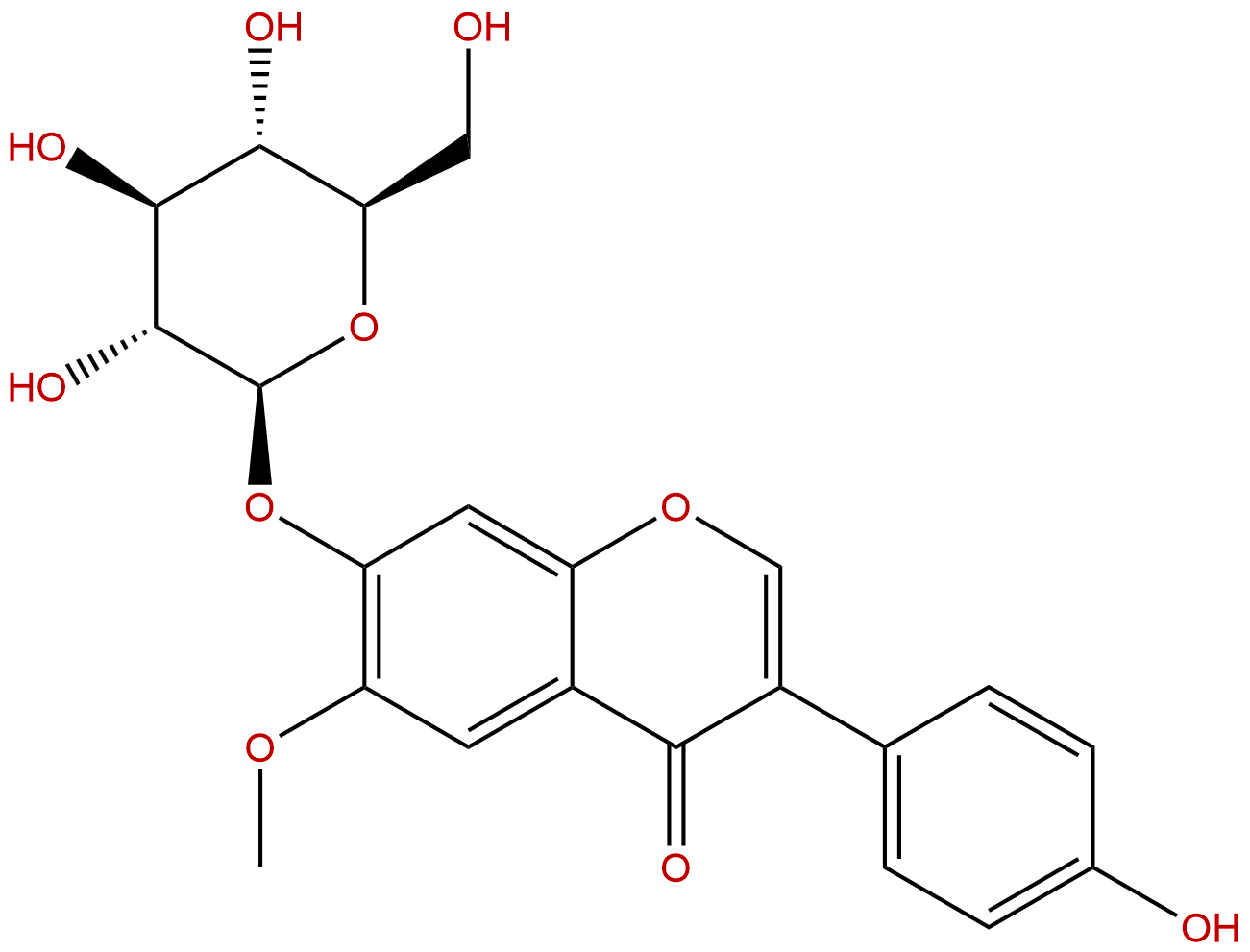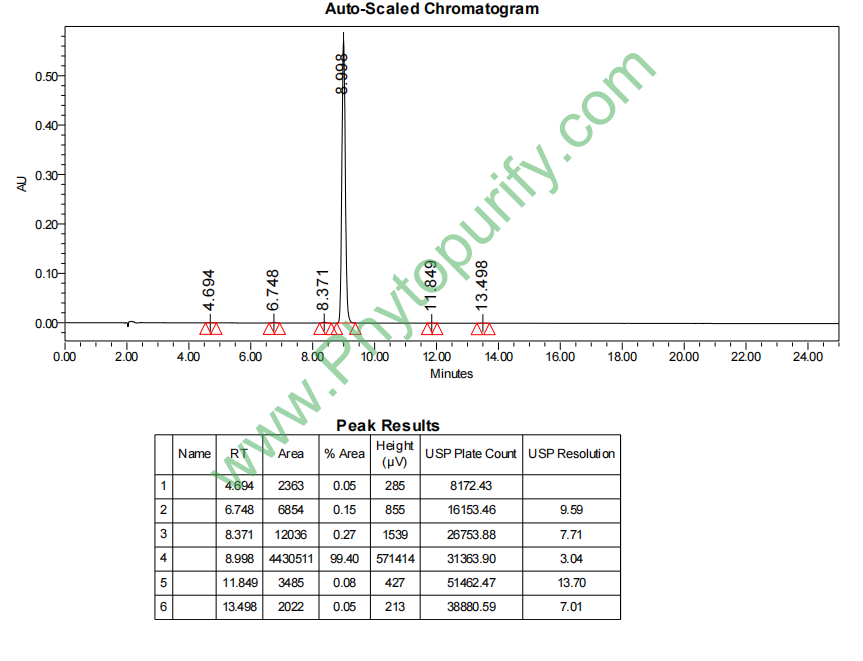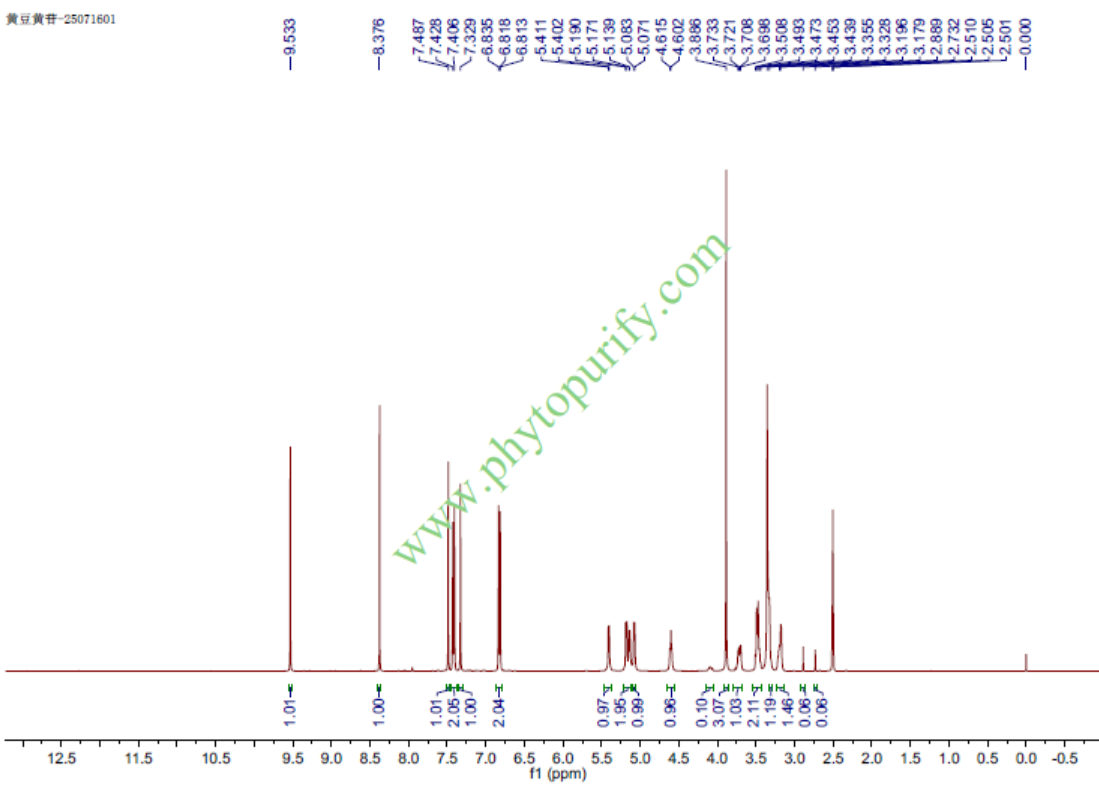
GlycitinCAS No.:40246-10-4
|
||||||||||
 |
|
|
||||||||

| Catalogue No.: | BP0680 |
| Formula: | C22H22O10 |
| Mol Weight: | 446.408 |
Product name: Glycitin
Synonym name: Glycitein 7-glucoside
Catalogue No.: BP0680
Cas No.: 40246-10-4
Formula: C22H22O10
Mol Weight: 446.408
Botanical Source: Glycine max (soy beans)
Physical Description: Powder
Type of Compound: Flavonoids
Purity: 95%~99%
Analysis Method: HPLC-DAD or/and HPLC-ELSD
Identification Method: Mass, NMR
Packing: Brown vial or HDPE plastic bottle
Storage: Store in a well closed container, protected from air and light. Put into refrigerate or freeze for long term storage.
Whenever possible, you should prepare and use solutions on the same day. However, if you need to make up stock solutions in advance, we recommend that you store the solution as aliquots in tightly sealed vials at -20℃. Generally, these will be useable for up to two weeks.
The product could be supplied from milligrams to grams, up to kilograms
Inquire for bulk scale.
Descriptions:
An isoflavone glycitin is isolated from the licorice, which has good inhibitory effect on α-glucosidase with IC50of 0.5646 mg·mL- 1, better than the position control acarbose. [1]
Glycitin, daidzin, and genistin may modulate differentiation of MSC to cause a lineage shift toward the osteoblast and away from the adipocytes, and could inhibit adipocytic transdifferentiation of osteoblasts, they could also be helpful in preventing the development of osteonecrosis.[2]
Glycitein has a protective effect on skin aging by inhibiting of MMP-1 and increasing of collagen through ERK/JNK/P38 down-regulation, which may be mediated by the inhibition of ERK, JNK, and p38 mitogen-activated protein kinases, suggests that glycitin is a potential agent for the treatment of skin ageing.[3]
A mixture of daidzin and glycitin has anti-obese and anti-diabetic effects on C57BL/6J mice fed with a high-fat diet by the regulation of oxidative stress .[4]
References:
[1] Feng C, Weiwei Y U, Gan Q, et al. Sci Technol Rev, 2014, 32(16):29-33.
[2] Xiang-Hui L I, Zhang J C, Sui S F, et al. Acta Pharmacol Sin, 2005, 26(9):1081-6.
[3] Seo G Y, Park S, Huh J S, et al. J Korean Soc App Bi, 2014, 57(4):463-8.
[4] Zang Y, Igarashi K, Yu C. Biosci Biotech Bioch, 2014, 79(1):117-23.
[5] Bo R U, Zhang Y H, Zhang Y. Practical Pharmacy & Clinical Remedies, 2011, 14(2):138-40.
HPLC of Glycitin

HNMR of Glycitin
